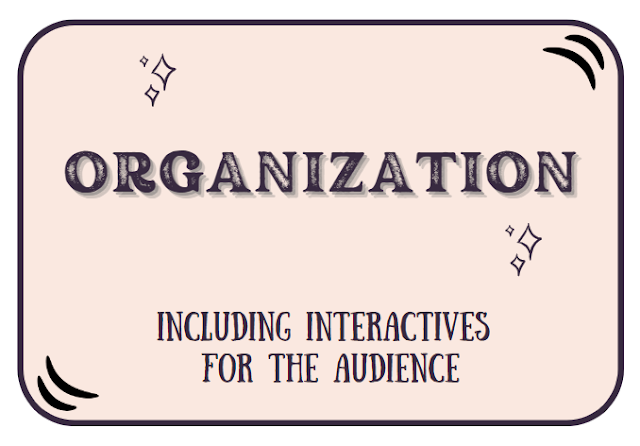Brainstorming for the Blog Post
Basics for the content flow of your blog post:
- Tell them what you are going to write about (the overview)
- You tell them it with details (write in specifics)
- You tell them what you told them (the wrap-up)
Remember, all blog posts will contain these sections: title, introduction, body, conclusion, comments prompt, and Work(s) Cited section. They will not look like academic papers. They will also include various visuals to break up the writing into manageable chunks: images, charts, bullet points, polls, as well as interactive links to outside resources such as Twitter, Facebook, and email. Be sure to see the handouts for the visual requirements and structure of a blog post. That is not part of this handout.
Brainstorming Ideas Outline
Tentative Title: _______________________
Introduction: Overview of the Topic
1. Problem (one-liner)
2. Symptoms
3. Solution
Main Idea 1: Problem Expanded (Specific Details) – Set the Scene
· How did you notice this problem?
· Why does this problem persist?
· Why do you think people resisted changing this?
· Experts who agree with you
Main Idea 2: Symptoms Expanded (Specific Details) – What are the Consequences of this Problem (Relate to your reader)
· The dangers of this problem.
· What it looks like.
· What happens if it isn’t fixed?
· Things you might not have realized are part of the problem
Main Idea 3: Solution Expanded (Specific Details) – How to fix it (Go on a Journey of Solving this)
· What does the world look like without this problem?
· Who will benefit when the problem is gone?
· Potential pitfalls to still watch out for.
· Short ‘how to’ resolve this for themselves.
Conclusion: Wrap it Up and Encourage the Audience
· Reiterate all of your main points.
· Take it one step further – how will the reader’s life change?
Comments Prompt: Get the Audience to Participate
· After the conclusion, create a new paragraph in a slightly different font, size, and/or color to get attention.
· Ask the audience a question (or two) and instruct them to post their responses in the comments section of the blog.
· Encourage positive responses by wording your question in a way that is not argumentative.
Work(s) Cited: Give Credit Where Credit is Due
· You should have used at least one quote, paraphrase, or summary in your blog post body section. Be sure to give proper attribution to the source in the sentence and in the Work(s) Cited page.
· If you have more than one source cited in the blog post, be sure to follow alphabetizing guidelines for the additional sources in your Work(s) Cited list.
Some of the content in this brainstorming handout was created by utilizing the ideas in the sources below.
Works
Cited
Rane, Zulie. Draft a Blog Post in 15
Minutes with This Blog Post Structure. YouTube, YouTube, 14 Mar.
2021, http://www.youtube.com/watch?v=bjzMkXXSGuo. Accessed 19 July 2023.
Rane, Zulie. “This Blog Post Structure
Can Help You Overcome Writers’ Block (and Even Editors’ Block).” Zulie
Writes, 14 Mar. 2021,
www.zuliewrites.com/blog/this-blog-post-structure-can-help-you-overcome-writers-block-and-even-editors-block.



Comments
Post a Comment